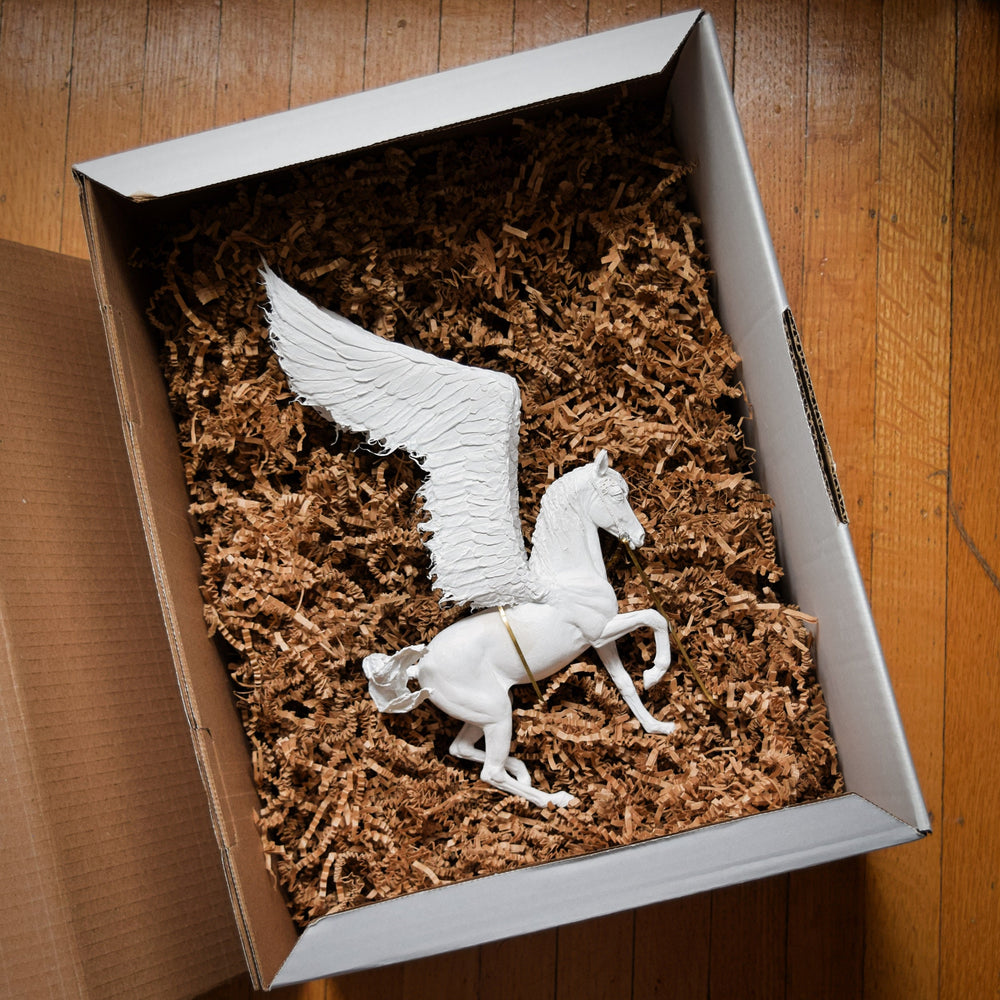
I often wish I could just toss it in a box with some shredded paper and call it a day, but ceramic and air dry clay sculptures are delicate objects. You must prepare for the worse and hope for the best because a FRAGILE sticker doesn't exempt your package from rough treatment by shipping companies.
With that in mind, I’m going to share my packing approach, which is based on techniques that museums often use to ship their precious and fragile artefacts. So, follow along to see how my ceramic and air dry clay artwork arrives safely to a collector's home.
Packing My Sculptures Step-By-Step

Step 1 – Find Mr. Right Box
Like a bed for Goldilocks, the box must by just right, with adequate clearance on all sides from the sculpture. This can be tricky as my sculptures are all one of a kind, so finding the right-sized box can be a challenge.
Step 2 – Cut and shape the foam
To prevent my sculptures from moving, I use foam to create a secure “nest”. First, I cut 2 pieces of foam to the size of the box interior, so they sit snugly. Second, I trace out the shape of the sculpture on one side of the foam and create a custom insert for the sculpture to be placed in.
The same must be done on the second piece of foam for the other side of the sculpture, creating a foam sandwich. If the sculpture is large, it may require more than 2 layers of foam for adequate padding.
This is the most time-consuming portion and requires lots of measuring and checking to see if the fit is just right.

Step 3 – Padding layers
Once the foam layers are established, I add further padding to separate the sculpture from the top and bottom of the shipping box. Usually with more foam.
Step 4 – Give it a good shake 🤝
Once I have everything cut out, I pack the sculpture into the foam, close up the box and shake it to see if there is any movement. Any movement can mean that delicate pieces can get bent or damaged. If it’s all snug, then I move on to the next step.
Step 5 – Thank You
I include a thank you card with my sculptures, which also doubles as a certificate of authenticity. The card includes pertinent details about your new treasure, including sculpture care as well as my heartfelt thanks 😊
Step 6 – Seal the box

Step 6 – More boxes???
Finally, if the sculpture is particular fragile (like ceramic), I pack it inside a second box. This is because ceramic sculptures are quite brittle and can shatter easily if they experience concussion. Double boxing absorbs any rough handling.
Air dry clay sculptures don’t often require such extensive packing, in part because they are lighter-weight and thus less likely to shift during transport from their cozy foam insets.
All in all the packing process takes at least 1-3 hours depending on the complexity of the sculpture. Then I take this lovely package to the post to be sent to the lucky recipient.

Sign here
I select shipping services that require a signature for delivery, which can mean higher shipping costs. This is for added security not only due to the increase of package thefts, but also to prevent any damage. A small price to pay for piece of mind.
Hopefully this has given you an insight into how laborious it is to ship sculptures safely. Additionally, shipping in Canada is expensive, and sculptures that require big boxes doubly so due to their size.
It's also often the most stressful part of the creative process, so hearing that a piece arrived safe at its destination in perfect condition is always something to celebrate for everyone. 🍾
What's Next?
Sign up for Collector's News
Check out available sculptures

